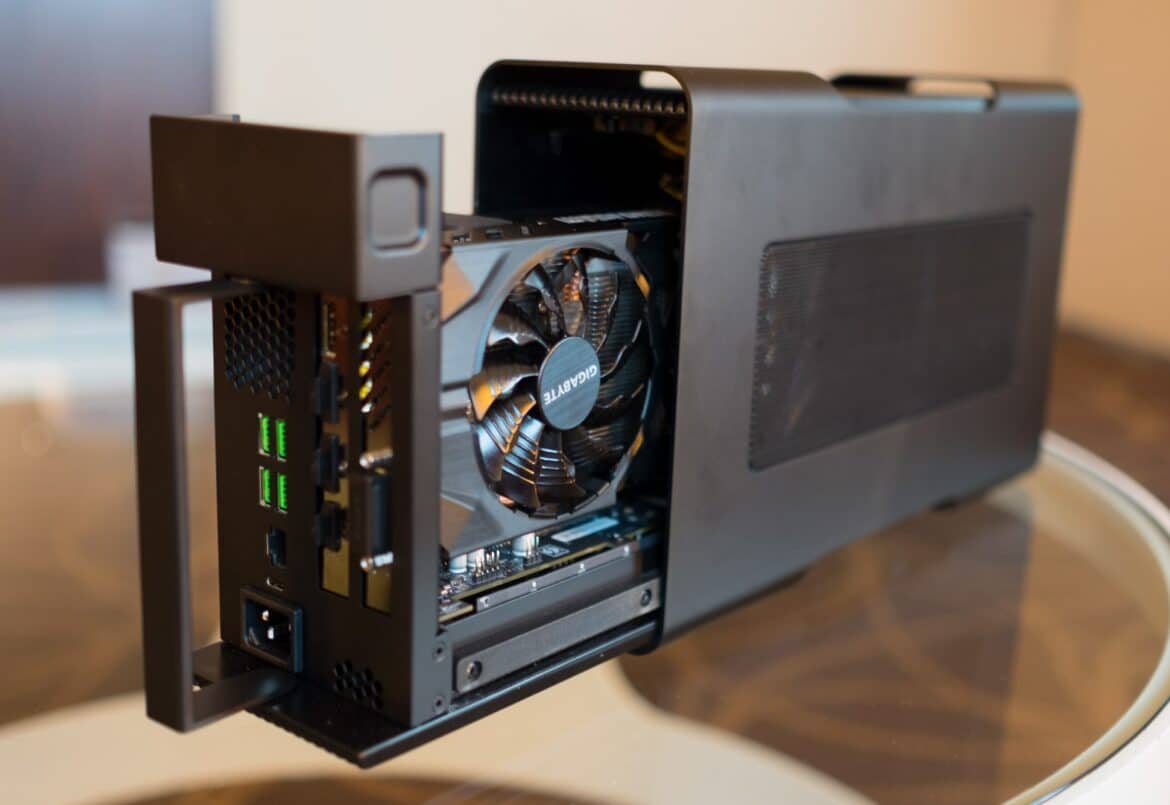1.2K
An external graphics card can greatly increase the laptop’s graphics performance. However, the acquisition costs are high.
External graphics card on the laptop – requirements and function
An external graphics card is a docking station for the graphics processor. This can increase the graphics performance of a laptop up to fifteen times in some cases. Thus, advantages of laptops and PCs can be combined, since flexibility and high performance become possible. However, the purchase is only worthwhile for special purposes.
- An eGPU case is necessary so that the external graphics card can be used. The graphics card can be placed in it. When buying, you should already pay attention to which graphics cards fit, because not every case is compatible with every card.
- Performance losses are always to be expected – to varying degrees depending on the components. The graphics cards are connected via Thunderbolt 3 or 4 interfaces. Older laptops don’t have interfaces with a high transfer rate, so the losses are particularly significant here.
- The high prices for the eGPU case and the external graphics card are also disadvantageous. In addition to the laptop, this adds up to considerably more than a PC.
When an external graphics card makes sense
An external graphics card can be especially worthwhile if you want to do photo or video editing, 3D modeling, or even play games that aren’t too fast, but don’t want to use a PC for it. This saves space in the home and the laptop can always be used on the go if needed.
- In contrast, an external graphics card is unnecessary for normal office tasks, since the laptop’s existing performance is usually not even utilized here.
- If the necessary Thunderbolt port is available, an external graphics card can be useful for special purposes like graphic design.
- However, it is unnecessary for common office use. For gaming, a PC is usually better suited and more cost-effective due to the lower latency.

